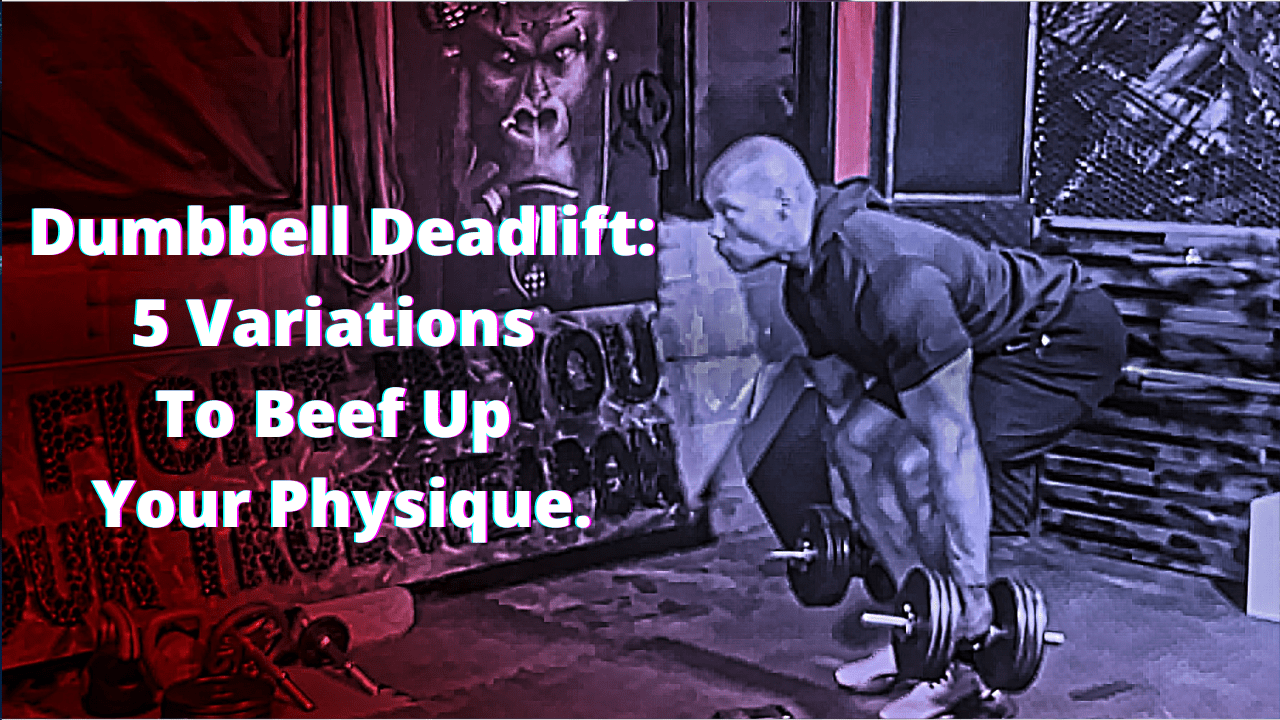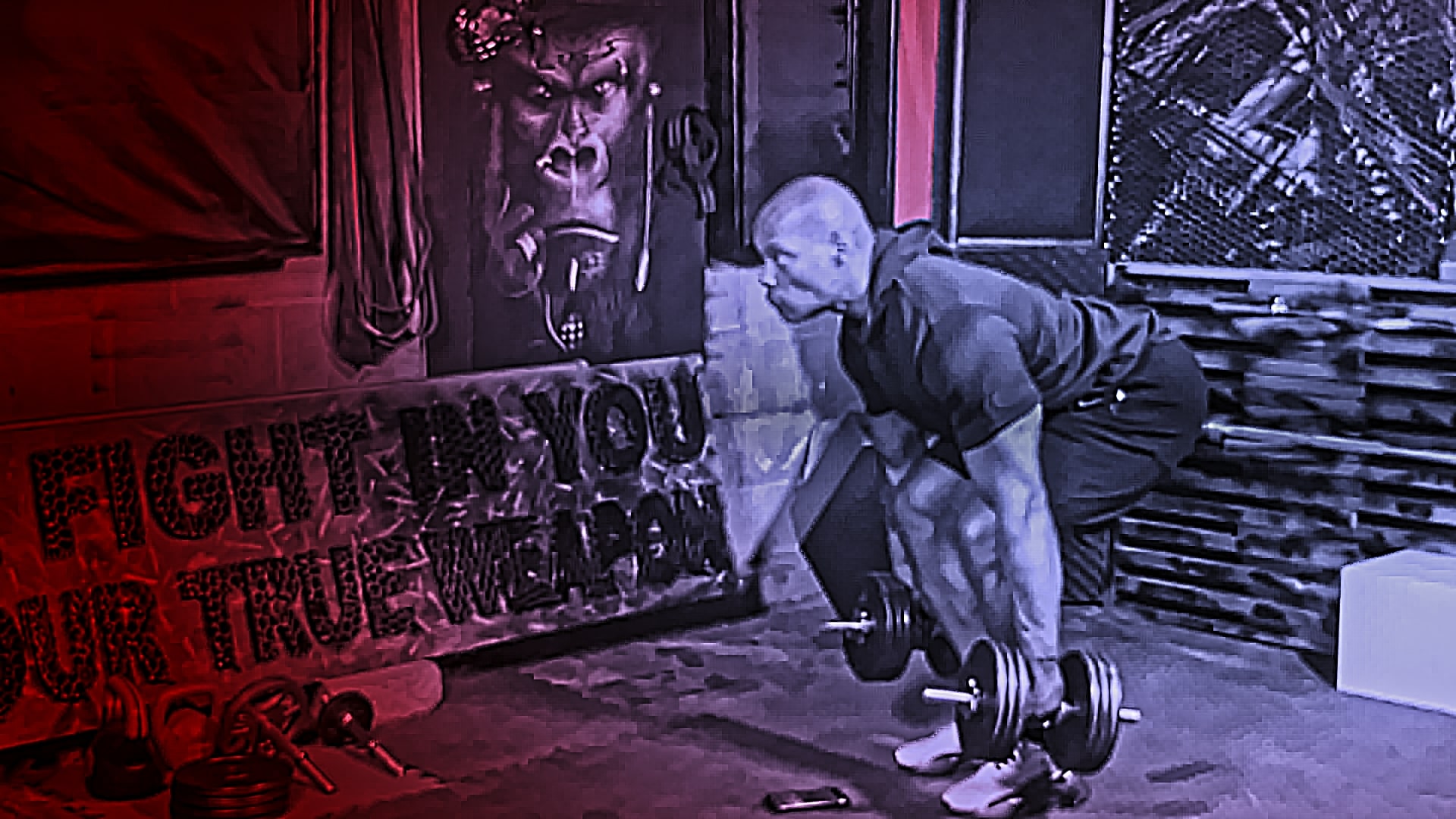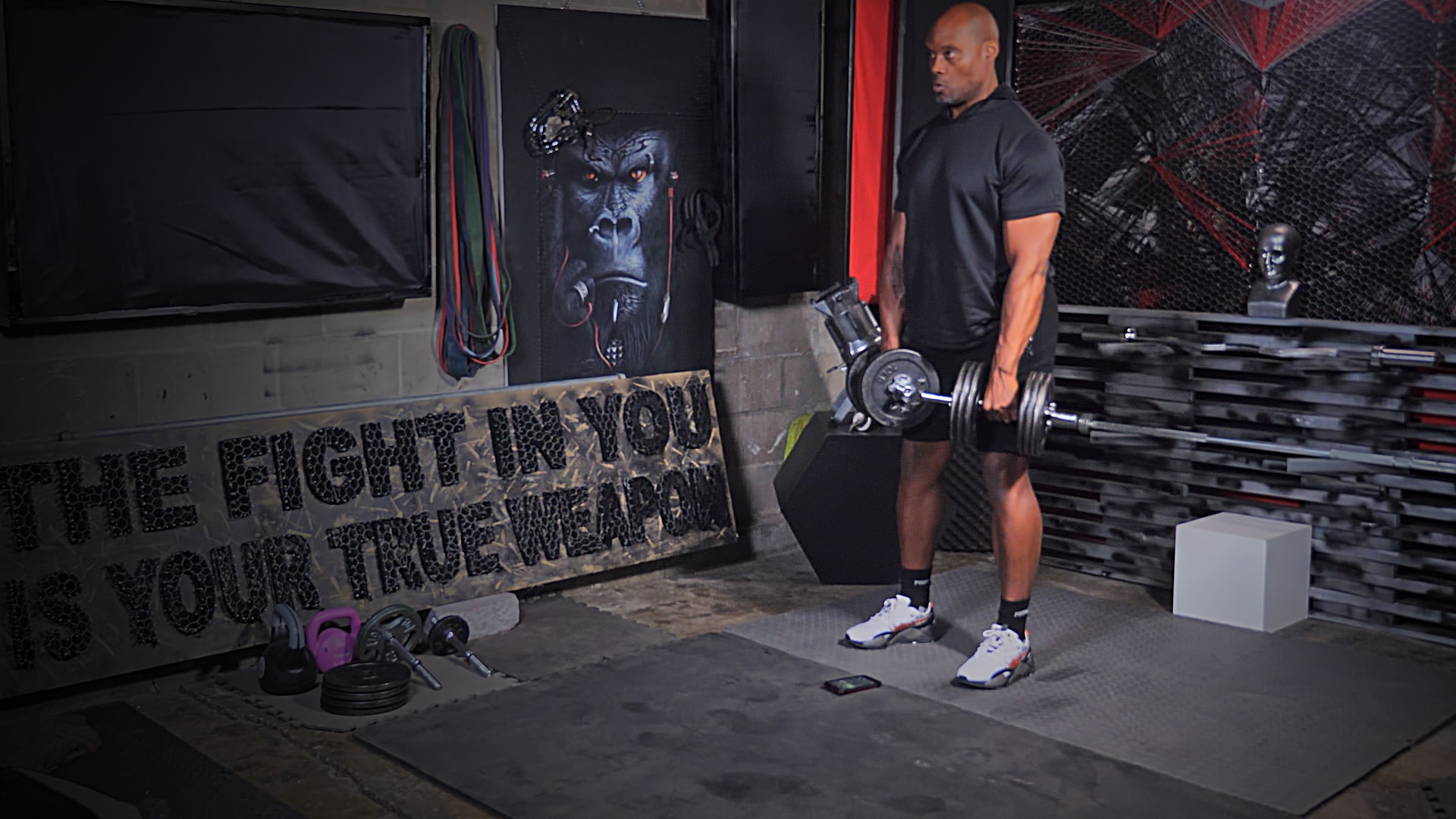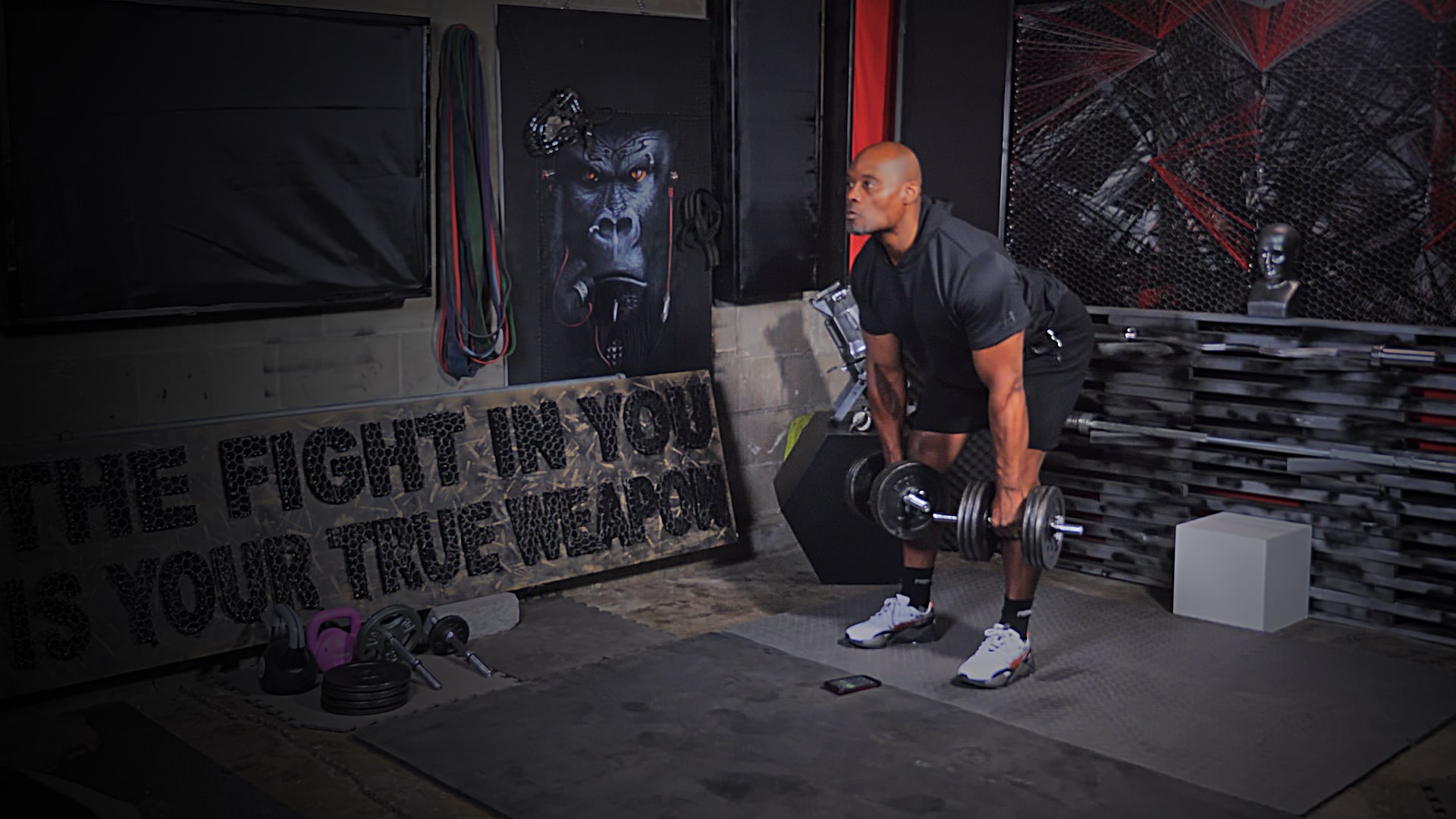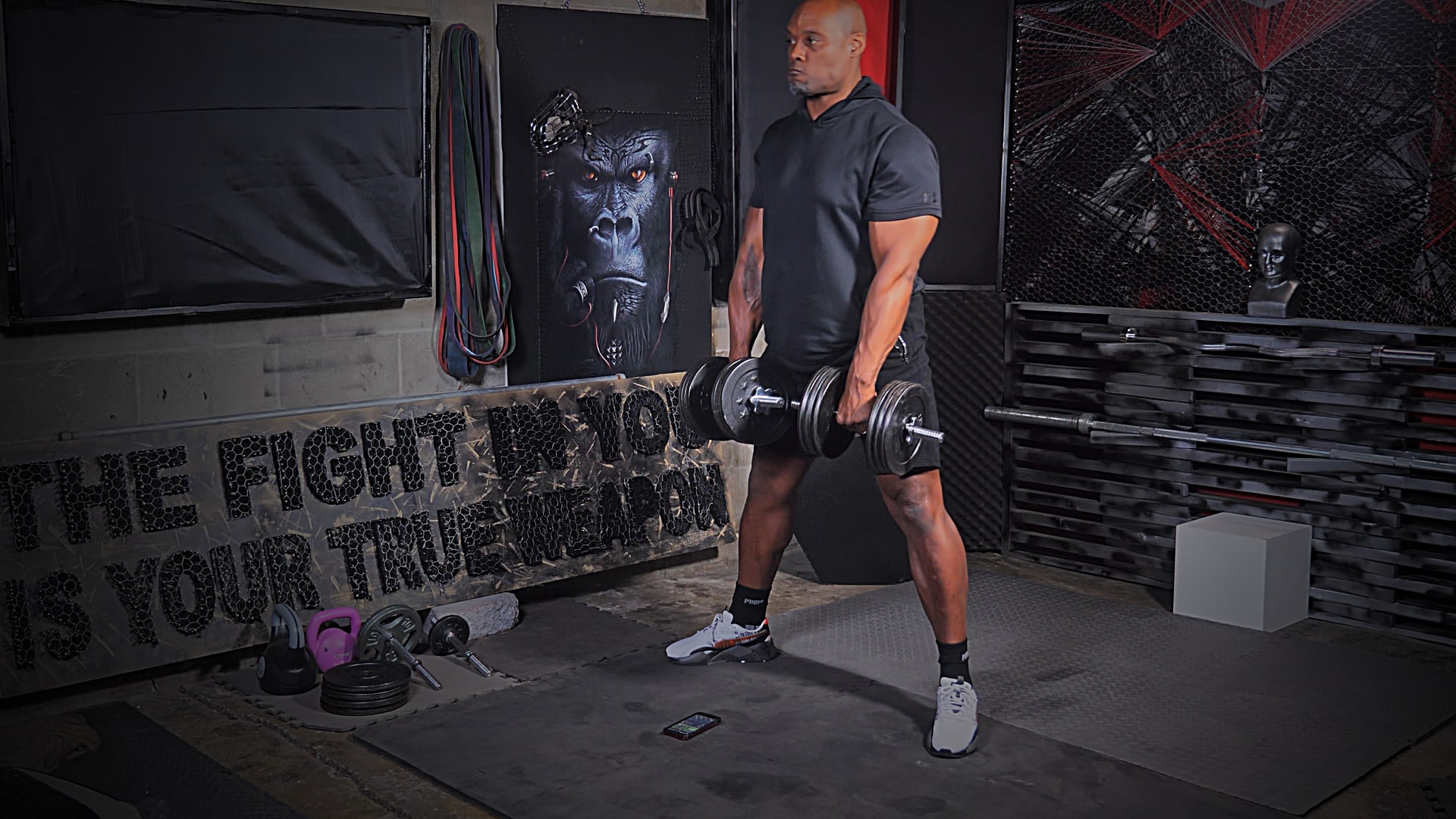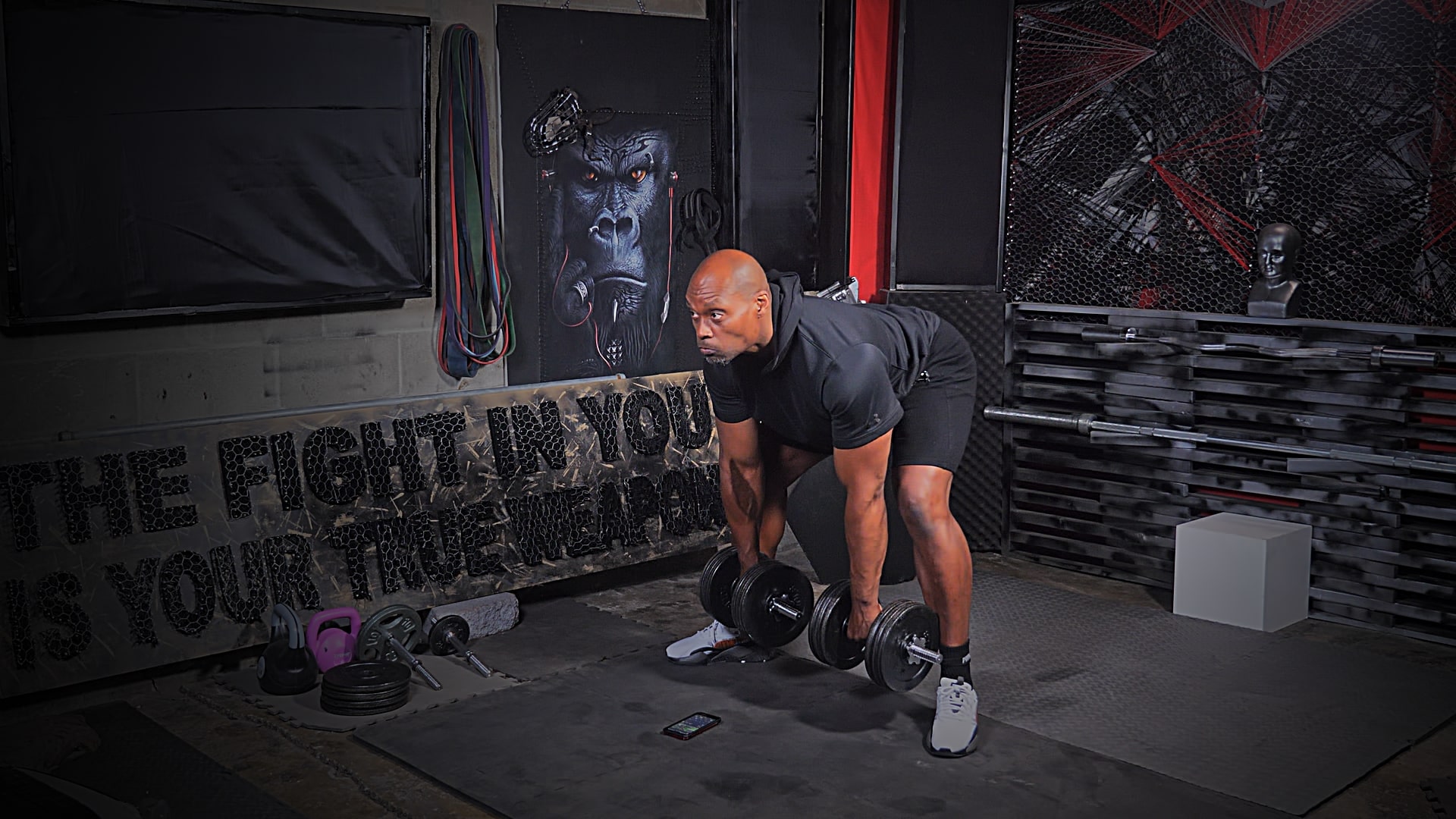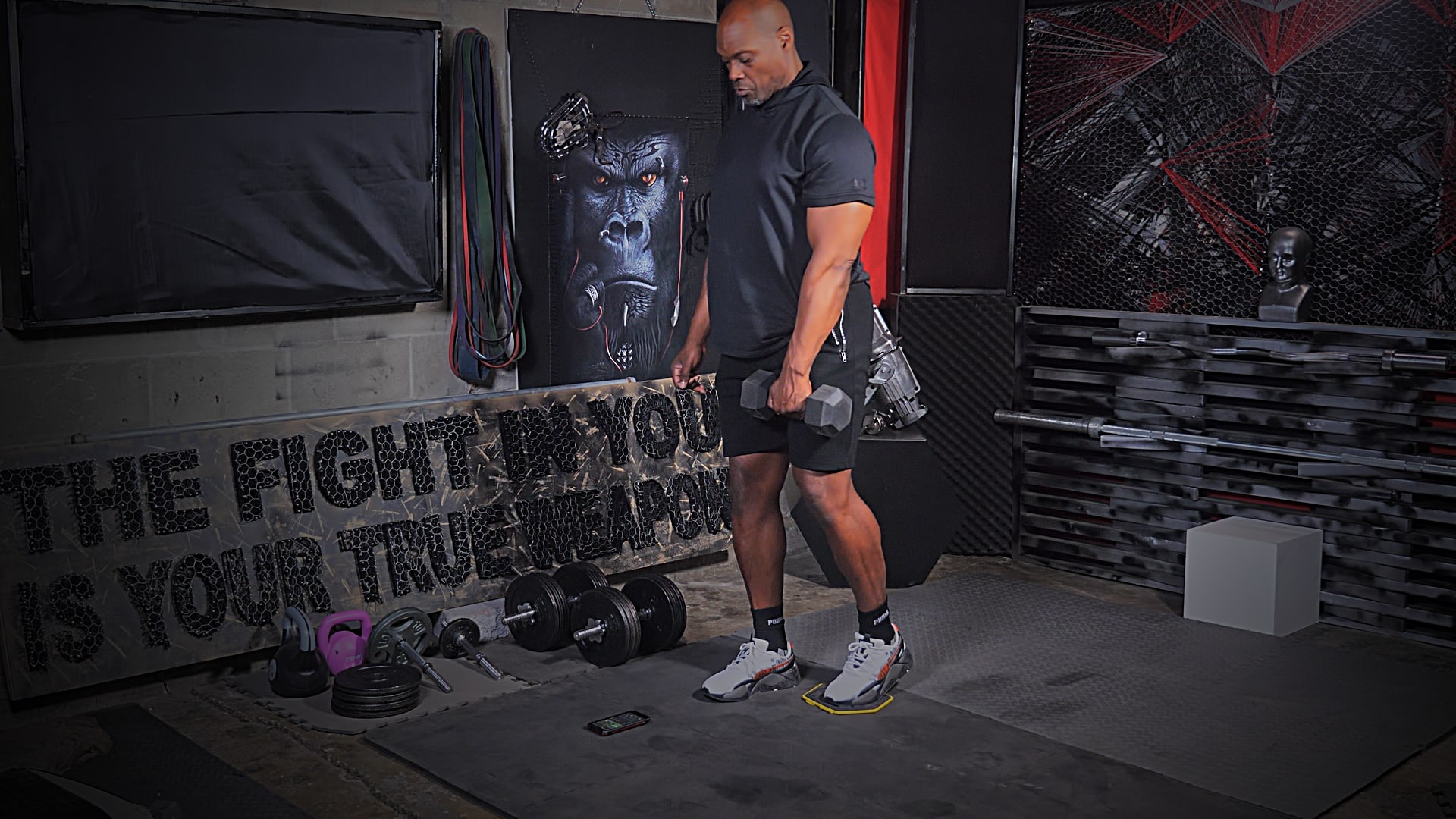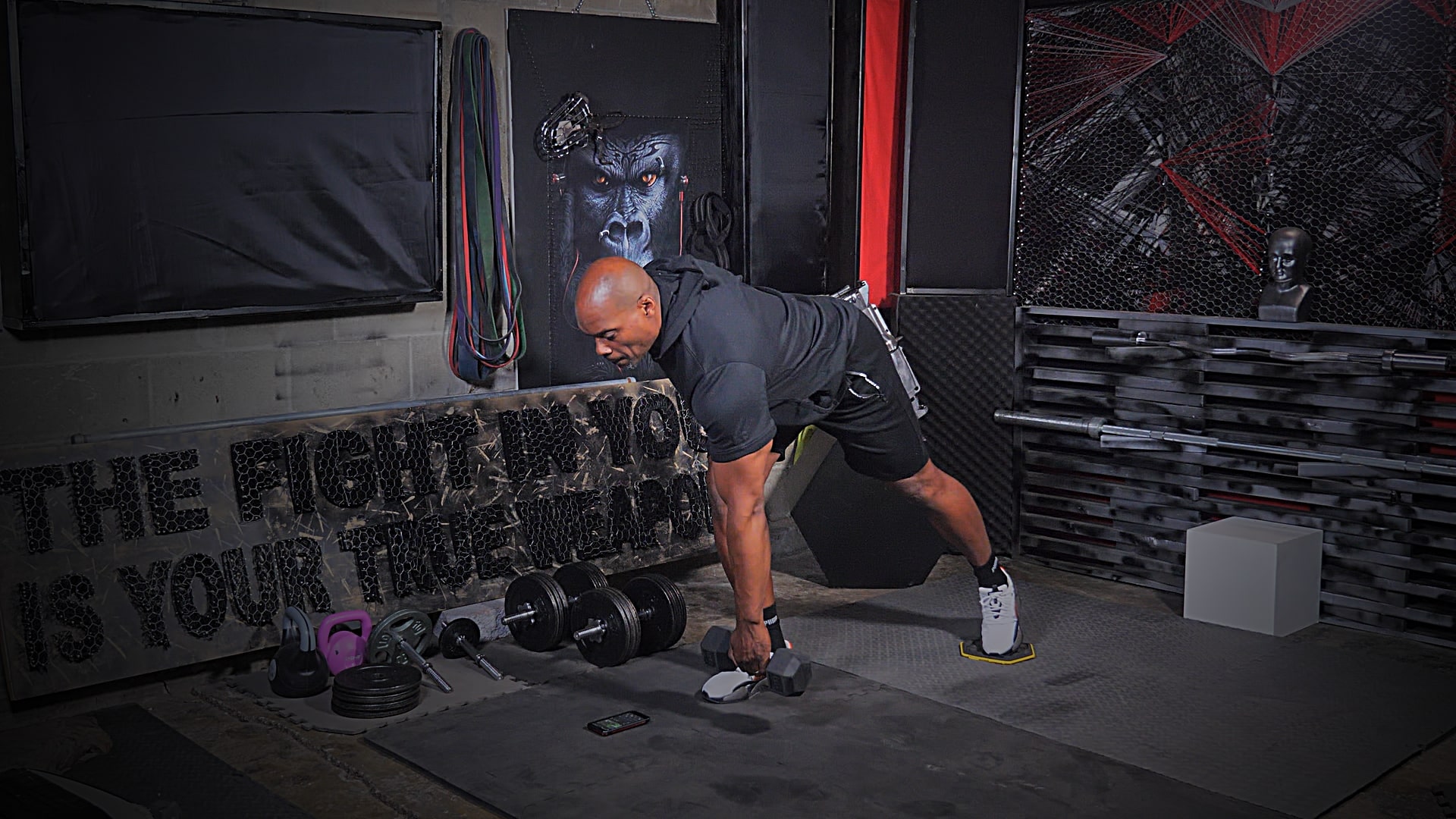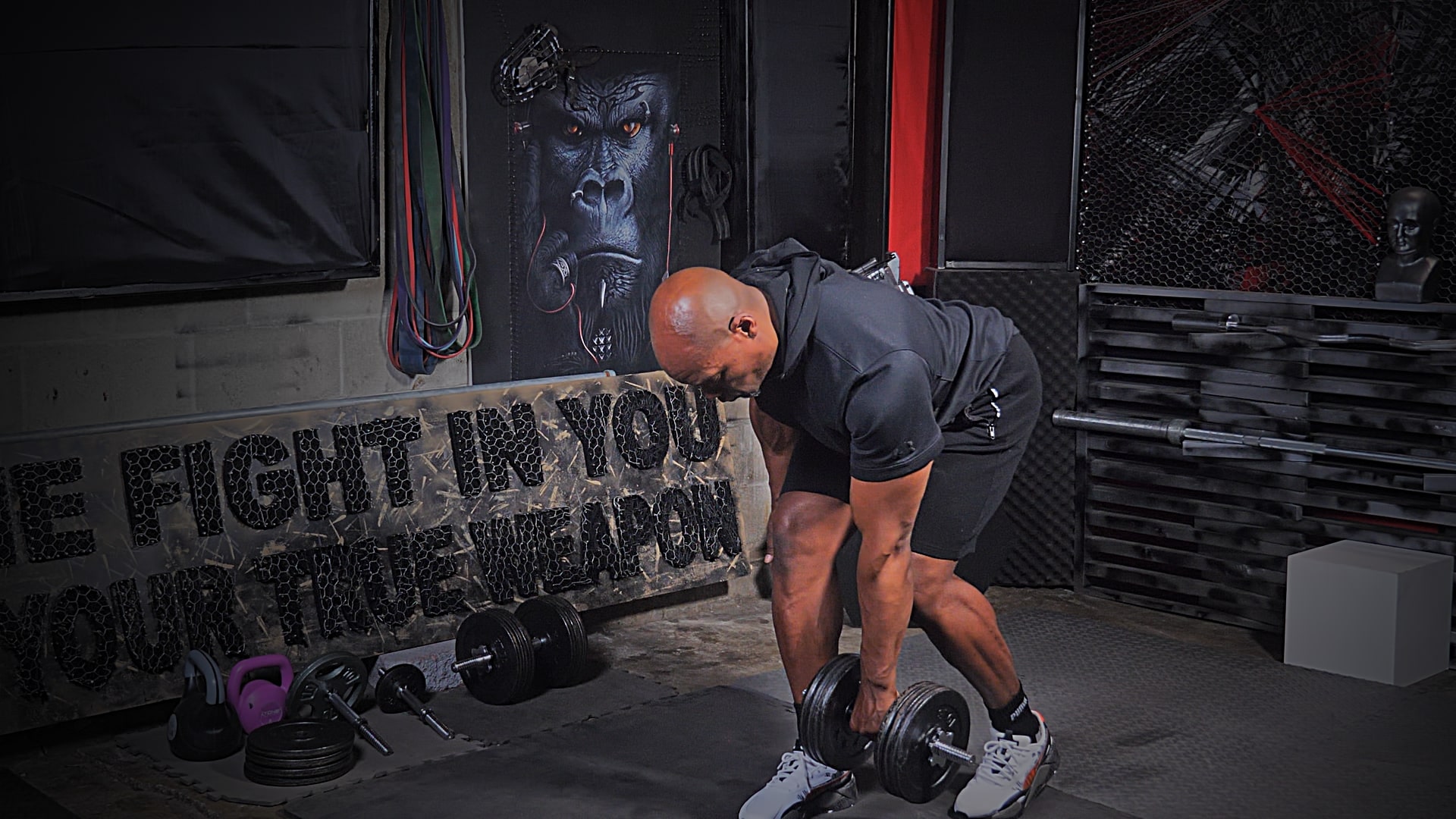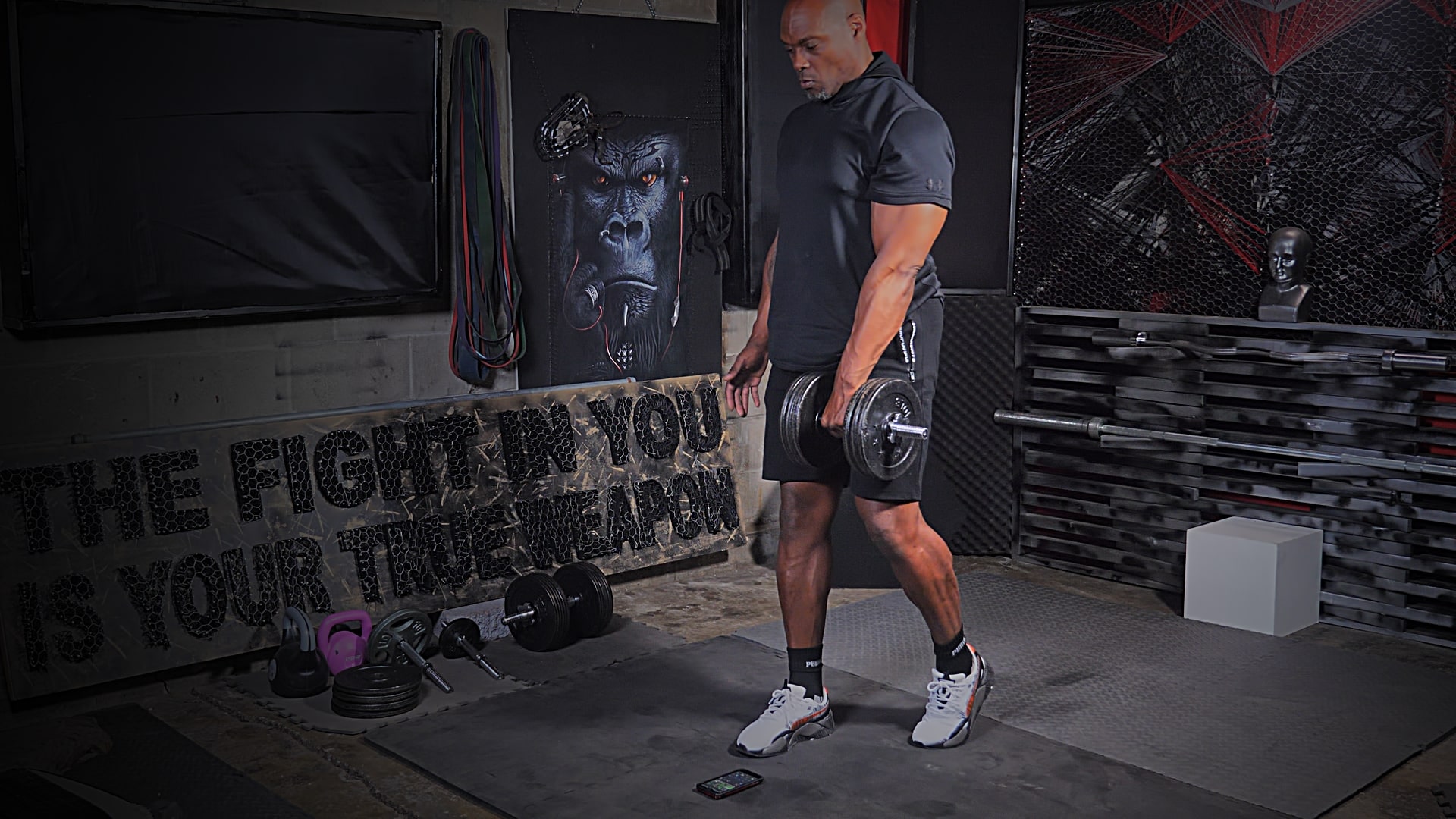Mission Jacked.com
Dumbbell Deadlift:
Build Muscle With Dumbbells
& These 5 Variations.
By Psymon H.
Dumbbell Deadlift Benefits:
The Dumbbell Deadlift is one of the most formidable and impactful exercises you can do with a pair of dumbbells. Here are some Dumbbell Deadlift benefits that should make you want to add this exercise to your training program.
· Dumbbell Deadlift variations can help to build overall strength.
· When performing the Deadlift with either a barbell or dumbbells, it can produce a marked impression on the body because the exercise targets multiple muscles in the upper and lower body.
· A Dumbbell Deadlift increase can improve core strength, core stability and posture. Start incorporating a deadlift variation into your training today.
· The Deadlift has been shown to reduce muscle loss in older adults, improve jump performance, and increase bone density
· The Deadlift is a great movement for training and activating the hip extensors.
· Because the dumbbell deadlift strengthen the posterior chain, it will have a great rollover effect on improving the strength of other compound movements.
Muscles Worked Using Deadlifts
Here is a list of muscles that are involved When Performing The Deadlift...
Hamstrings,
Gluteus,
Quads,
Calves,
Hip Flexors
Abductors
Latissimus Dorsi
Terres Major
Terres Minor
Rhomboideus
Trapezius
In this article, I will show you how to perform this exercise plus 5 variations you can add to your training sessions.
Scroll Down To Continue Reading This Article
Related Articles: Grow Your Physique With Dumbbells
Dumbbell Squats: 4 Unusual Variations To Beef Up Your Quads & Strengthen Your Knees
DB RDL
7 Dumbbell Lat Exercises To Build A Monster Wide Back.
Dumbbell Clean and Press Your Way To A Stronger and Fitter Physique
Try This Dumbbell Hamstring Workout For Size -
2 Back Dumbbell Workout Exercises For Crazy Thickness
The Top 15 Best Hamstring Dumbbell Exercises
Continue Reading Our Dumbbell Deadlift Article
Put Your Dumbbells To Good Use & Learn How To Do Dumbbell Deadlifts:
The Exercise Master Class
Items Needed: One pair of dumbbells
Cue 1: With your feet set shoulder-width apart, start with weights on either side of your feet.
Cue 2: Bend your knees and flatten out your back as you bend down to grip the dumbbells. Make sure your neck is in a neutral position, your chest is high and your core engaged. Take a large breath.
Cue 3: As you take the strain and lift the dumbbells off the floor, retract your shoulder blades by pulling them back and down.
Cue 4: Keeping your shoulder back, your chest high, and your core engaged, use your quads, hamstrings, and glutes to push away from the floor and help you power up to the standing position. Ensure that you keep your knees from caving in as you stand up. Exhale on your way up.
Cue 5: Squeeze your shoulder blades at the top of the movement.
To help improve core, leg and back strength during your workout, try not to lose control of the weight as you lower them to the floor. Far too many times you see lifters slamming the weight on the floor as they lower down, only to catch it on the way up. By doing this, they are using momentum to lift the weight instead of building strength.
Check Your Dumbbell Deadlift Form:
The deadlift is an easy exercise to mess up. On one workout there's too much strain on certain muscle groups, and on another workout you're using way too much momentum and not enough lower body strength. If you want to get better and increase your strength in the right way, start recording your deadlift workout. When you play your workout back, it's possible that you will be able to detect where you can make improvements.
The Deadlift vs. The Romanian Deadlift.
What Is The Difference Between The Dumbbell Deadlift Variations?
Even though both exercises target similar muscle groups, there are a few differences.
· The Romanian Deadlift (aka RDL) targets the Glutes and hamstrings. Basic Deadlifts focus more on the Quad muscles. RDLs target the Hamstrings and glutes, with the knees slightly bent and flexed throughout the movement.
· You start the RDL with the downward eccentric portion of the exercise in the standing position. Deadlifts start with the upward concentric part of the exercise with the weights on the ground.
· With Dumbbell Deadlifts, you use your knees to push off the floor, unlike the RDL where you pull with your hips. The RDL is a hip-hinging exercise which places a large stimulus to the Gluteus muscles.
· With the RDLs, your shoulders are positioned much more forward than with Dumbbell Deadlifts.
rdl with dumbbells
rear delt row
Variation 2:
The Dumbbell RDL
Let's do a dumbbell romanian deadlift.
Items Needed: One pair of dumbbells
Cue 1: If you are using heavy weights, you can start with them resting on top of a bench so that you don't have far to get in the starting position.
Start with the weights in your hand using a pronated grip. Rest the weights on your outer thigh.
Cue 2: Have your knees slightly bent and train in the knee-bent position. Direct your body weight so that it is over your heels.
Cue 3: Engage your core, maintain a flat back, and lift your chest. Next, tense your Glutes and Hamstrings before engaging your Lat muscles. This will help you to keep the weights resting on your outer thighs and stop you from rounding your lower back.
Cue 4: Hinge at the hips by pushing your ass back as far as possible while keeping your knees bent. To fully activate your Glutes and Hamstrings, keep a hinge position until your dumbbells are level with your mid shins.
Cue 5: To help drive your hips up and forward to the start position, squeeze your glutes without extending your knees.
Although this variation targets the Erector Spinae and the lower back, the exercise shouldn't make those two areas the most worked muscles.
If you feel you’ve overloaded and overworked your lower back and erector spinae area, it may be because you are not using the proper form. Poor form takes much of the stress away from the Glutes and Hamstrings. Another reason for overload could be because you are lowering instead of hinging at the hips, and the dumbbells end up too low down the leg.
You can and should add this deadlift variation to your lower body workouts at least once per week.
Work on getting a good range of motion on every repetition making sure to extend the hips.
If you have a weak grip, use wrist straps to perform the exercise and maintain good form.
Generate power through your legs and back muscles.
Don't drop down during the movement but make sure to control the resistance at all times. The benefits to this is that you become stronger throughout your lower body muscle groups.
rdl db
Variation 3:
The Dumbbell Sumo Deadlift
The Dumbbell Sumo Deadlift needs no introduction. Everything about this exercise tells you it works similar to conventional deadlifts by brutalizing the hamstrings and Gluteus muscles with the help of the Quads and Back muscles.
Items Needed: One pair of dumbbells
Cue 1: With weights in hand using a pronated grip, stand upright with feet wider than shoulder-width apart. Turn your feet out so that they are at a 45-degree angle. Place the weights next to each other under your hips.
Cue 2: With slightly bent knees, maintain a flat back and ensure you keep your chest high and core engaged. Retract your shoulder blades by bringing them back and down.
Cue 3: Before slowly lowering the dumbbells to the floor, take a deep breath. Only go down as far as you feel comfortable with. Hold briefly before powering your way back to the start position.
Variation 4:
The Contralateral Dumbbell Sliding Deadlift
This variation will try to twist out of position and take your leg out to the side instead of behind you. It will take concentration and control to maintain the best form. I think this is a much underrated single leg dumbbell deadlift.
Items Needed: One Slider, Bath towel or paper plate, and one dumbbell. You also need a slick surface to make good use of this exercise.
Setup: Stand with feet just about shoulder-width apart with the slider firmly under the toes of your right leg. Place the weight on the same side as the slider, ensuring that it is just in front of the Quad muscle.
Cue 1: Keep your chest high; tense your core working Hamstring and Glutes (front leg). Maintain a slight bend in the front knee.
Cue 2: As you slowly hinge at the hips, use your toes to push down and back on the slider until the weight is about level with your lower shin bone. Ensure that you stay square and you have your front knee slightly bent.
Cue 3: Press down on the slider and squeeze your glutes to drive your hips up and forward without extending your front knee.
Variation 5:
Single-Leg Dumbbell Deadlift
Items Needed: One dumbbell.
Cue 1: Start in a straddle position with one leg in front of the other.
Cue 2: Have the weight on the floor next to your front foot.
Cue 3: Maintain a slight bend at the knee.
Cue 4: Using a pronated grip, wrap your hand around the weight without lifting it off the floor. Have your back flat, core tight, and retract your shoulder blades by pulling them back.
Cue 5: Drive your feet into the ground and pull the weight until you're standing upright, making sure to keep your core tight throughout
the entire exercise movement.
Dumbbell Deadlift Extra:
The Single-Leg Stiff-Legged Deadlift
The Single-Leg Stiff-Legged Deadlift is a muscle, strength and balance challenge. If this is the first time doing this deadlift variation, you’re advised to take your time and start with light weights until you master this deadlift.
This deadlift variant especially targets muscle groups such as the glutes, hamstrings and core muscles.
Items Needed: One pair of dumbbells.
Cue 1: Stand with feet shoulder-width apart and with dumbbells in front of the hips using a pronated grip.
Cue 2: Lift one foot off the ground and straighten the leg behind you while maintaining a straight firm leg on the ground.
Cue 3: Take a breath as you begin the movement. Hinge at the hip and let the dumbbells slowly travel down towards the ground.
Cue 4: As the weights lower, keep your body square on and try to lift your back leg so that it is at the same level as your glutes. You will start to feel the contraction in your standing hamstring muscle and glutes.
Cue 5: Press your front foot into the ground and try to focus on driving the weight through your big toe.
Cue 6: Pause briefly at the bottom of the movement and begin to exhale as you return to the top of the movement.
Extra Tips: You may notice that during this deadlift, if you have weak core muscles you may start to rotate towards the non-working side. Try to resist the rotation to fully work the Hamstring and glute muscles.
You may also find that your balance is better on one side than it is on the other. In such cases, always start the deadlift on your weakest side. By starting your deadlift on your weakest side, over time you will be able to balance out any weaknesses between your right and left sides.
If your hamstring muscle feels tight, make sure to fully warm up the area before starting your deadlift. Always warm down at the end of each workout, and make hamstring and hip mobility a priority on rest days.
Thank you for reading our Dumbbell Deadlift Article.
More Dumbbell Articles
romanian dumbbell deadlift
Is Goal Setting The Smart Way To a Better Physique?
The Leaning Lateral Raise - A Great Way To Cap off The Deltoids
Use this Rear Delt Fly master class to grow 3D Deltoids - 6 huge variations to add to your exercise arsenal
Master True Dumbbell Lateral Raises and the 7 Variations to Develop King-Kong Side Delts
Top 10 Dumbbell Chest Exercises
Dumbbell Lunges -Build Muscle In Your Lower Body With These Awesome Variations
Mission Jacked L.L.C
Address: 9407 NE Vancouver Mall Dr
STE 104 #1269
Vancouver, WA 98662 USA
Email: mission@missionjacked.com
